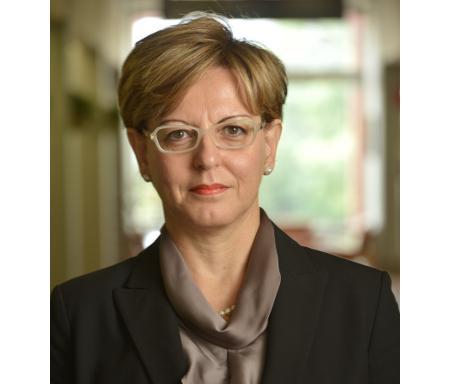Dr. Athina Petropulu is part of a team that has been selected to receive the Stephen O. Rice Prize of the IEEE Communications Society for the paper, "Joint Radar and Communication Design: Applications, State-of-the-Art, and the Road Ahead," IEEE Transactions on Communications, vol. 68, no. 6, pp. 3834-3862, June 2020.
The award will be presented at the Awards ceremony on 29 May at ICC 2023 in Rome, Italy.
More information on the paper can be found below.
F. Liu, C. Masouros, A. Petropulu, H. Griffiths, and L. Hanzo, "Joint Radar and Communication Design: Applications, State-of-the-art, and the Road Ahead," IEEE Transactions on Communications, Volume: 68, Issue: 6, Year: 2020.
Abstract
Sharing of the frequency bands between radar and communication systems has attracted substantial attention, as it can avoid under-utilization of otherwise permanently allocated spectral resources, thus improving efficiency. Further, there is increasing demand for radar and communication systems that share the hardware platform as well as the frequency band, as this not only decongests the spectrum, but also benefits both sensing and signaling operations via the full cooperation between both functionalities. Nevertheless, the success of spectrum and hardware sharing between radar and communication systems critically depends on high-quality joint radar and communication designs. In the first part of this paper, we overview the research progress in the areas of radar-communication coexistence and dual-functional radar-communication (DFRC) systems, with particular emphasis on application scenarios and technical approaches. In the second part, we propose a novel transceiver architecture and frame structure for a DFRC base station (BS) operating in the millimeter wave (mmWave) band, using the hybrid analog-digital (HAD) beamforming technique. We assume that the BS is serving a multi-antenna user equipment (UE) over a mmWave channel, and at the same time it actively detects targets. The targets also play the role of scatterers for the communication signal. In that framework, we propose a novel scheme for joint target search and communication channel estimation, which relies on omni-directional pilot signals generated by the HAD structure. Given a fully-digital communication precoder and a desired radar transmit beampattern, we propose to design the analog and digital precoders under non-convex constant-modulus (CM) and power constraints, such that the BS can formulate narrow beams towards all the targets, while pre-equalizing the impact of the communication channel. Furthermore, we design a HAD receiver that can simultaneously process signals from the UE and echo waves from the targets. By tracking the angular variation of the targets, we show that it is possible to recover the target echoes and mitigate the resulting interference to the UE signals, even when the radar and communication signals share the same signal-to-noise ratio (SNR). The feasibility and efficiency of the proposed approaches in realizing DFRC are verified via numerical simulations. Finally, the paper concludes with an overview of the open problems in the research field of communication and radar spectrum sharing (CRSS).
Congratulations to Athina on this award and her impactful work!

